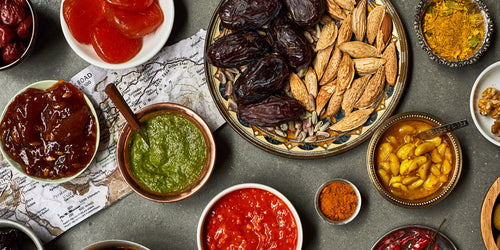Your Cart is Empty
“Pho is so elemental to Vietnamese culture that people talk about it in terms of romantic relationships,” Andrea Nguyen writes in her introduction to The Pho Cookbook. “Rice is the dutiful wife that you can rely on, we say. Pho is the flirty mistress that you slip away to visit.”
You may know what Nguyen is talking about even if you’re not Vietnamese. With its fragrant broth, rice noodles that coquettishly slip through your chopsticks, and lipsmacking ribbons of beef and tendon, pho is inherently seductive. A well made bowl should keep your lips close at all times.
What’s that? It’s rude to ignore everyone at the table while you diligently slurp every last drop? Don’t pay attention to those distractions. They’re probably just jealous of how pretty your pho looks.
Andrea Nguyen is an award-winning author who’s been educating Americans on Vietnamese cooking for decades. Her first book, Into the Vietnamese Kitchen, is a Joy of Cooking of sorts for Viet food; her playfully photographed Banh Mi Handbook is a love letter to her native Vietnam’s essential street sandwich, and a pocket guide for how to make the banh mi your own. The Pho Cookbook may be her richest work yet—a dive not just into the country’s most famous soup, but also the complex role it played in 20th century Vietnamese history.

Pho is a fairly recent invention, Nguyen explains, a unique confluence of early 1900s French occupation, Chinese migration, and Vietnamese ingenuity. The beef broth that forms the base of pho emerged out of the French colonial demand for steaks and roasts in Hanoi; prior, cattle in the country were mostly used for labor, not food. “The leftover bones and scraps were salvaged and sold by a handful of Hanoi butchers,” Nguyen writes, and “street vendors who were already selling noodle soup recognized an opportunity to offer something new.” Many of those vendors’ customers were Chinese laborers from Guangzhou and Yunnan, employed by the riverside city’s shipping companies. Eventually ethnic Vietnamese caught on, and the dish rapidly spread across the city and, soon, down towards Saigon, where local cooks skewed the Hanoi pho recipes sweeter with lumps of rock sugar, aromatic vegetables, and a bevy of condiments.
Those regional differences—spare, beefy Hanoi pho versus opulent spiced Saigon pho—persist today. And through a traumatic century of invasion, revolution, and civil war, the persistence of pho is no small thing. As Nguyen makes clear with recipes traditional and otherwise (pho michelada, anyone?), pho is more than a dinnertime mistress. It’s an emblem of the Vietnamese spirit.

How to improve your homemade pho
Sort out your seasonings
Tough, bony cuts of beef yield the base flavor and body of your pho broth, but Vietnamese cooks also rely on bottled condiments to add extra character and a salty bite. Fish sauce is one essential seasoning, but Nguyen also uses soy sauce and Maggi seasoning in some versions. The latter “injects a unique meaty flavor to meatless pho broth,” handy for a vegetarian pho. Shop all sauces.
Don’t skimp on the spices
When making pho broth, the quality of your spices matters as much as your beef. “A blend of spices contributes aroma and flavor to create a multidimensional pho broth,” Nguyen writes. “In a respectable pho broth, no one spice hits you over the head.” For best results, use fresh whole spices and toast them before adding to the pot. Common pho spices include cassia sticks, star anise, black cardamom, and coriander seeds. Shop all spices.
And char your aromatics
Many pho recipes overlook this critical step for building a great broth, but take the time to char your onions and ginger until they blacken. “This signature step in making pho slightly cooks the aromatics and converts their sugars,” Nguyen writes.

Easy pho recipes to get you started
Recipe: Quick chicken pho
Recipe: Seafood pho





